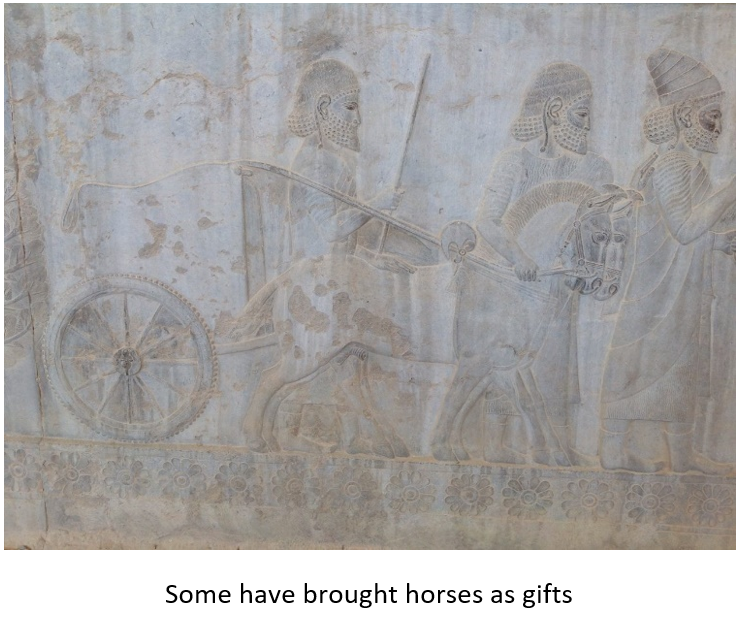Mediterranean Cultural Interactions at a Glance
페이지정보
내용
Mediterranean Cultural Interactions at a Glance
Mohammad Hassan Mozafari(지중해지역원)
The geographical location of the Mediterranean region, its location between the three continents of Asia, Africa, and Europe and in the middle of the oceans, is a unique natural identity of the region. Temperate climates, diverse natural geography, roads, waterways, sea, and ports all contributed to the emergence of sub-civilizations, great empires, and ancient and the Middle Ages civilizations, and created certain conditions for the Renaissance and modern civilization. The emergence of Mediterranean civilizations from ancient times to the Middle Ages to the Renaissance and modern times is the result of social, cultural, political, and economic interactions of the peoples and nations of the region and their connections and interactions with important civilizations of Mesopotamia, India, and China. If we imagine human civilization in the form of a man, he has spent his childhood in the eastern Mediterranean, Mesopotamia, India, and China, in the Medieval Ages grew up and in the Eastern Mediterranean, and in his early youth, entered Europe and also went to America and then became a global figure. In a word, no civilization has emerged in a vacuum. Every civilization owes to the past micro and macro civilizations and the current human civilization is rooted in medieval and ancient civilizations.
The Micro-civilizations of the Eastern Mediterranean region:
We have heard many times that the Mediterranean is the cradle of human civilization. This is true, because the small and ancient civilizations of the region, including the Egyptian, Phoenician, Greek, and the Minoan, and Mesopotamian civilizations, together with other peoples, came under the umbrella of the Persian Empire, for more than a thousand years, lived together and with together created the greater Persian civilization.

The representatives of different nations in Persepolis, which are depicted on the eastern stairs of the palace of the Persian Empire are the best evidence of their participation in the Persian civilization. Parseh, the capital of the Achaemenids, was the place where the Nowruz ceremony was held every year. Apadana Palace, Darius Palace, was a place where delegations from different states arrived and were received. These sculpted images are presented as an exhibition that not only reports how the official New Year celebrations are held, and how the representatives of different nations enter the royal palace, but also show the details of their hairstyles, clothes, hats and shoes, agricultural and livestock products, and even some of their handicrafts. In these images, the Medes, Elamites, Parthians, Indians, Haraitis, Kandaharis, Sistanis, Balkhis, Kharazmis, Turks, Assyrians, Armenians, Greeks, Babylonians, Arabs, Egyptians, and Africans have brought various gifts to present to the king.


Representatives of various tribes of the Persian Empire, with gifts in their hands, are climbing the steps of the palace. They have come to the capital to meet the king and wish him a Happy New Year.






The presence of thousands of people in different clothes, hats, and shoes, along with gifts and artistic products, agriculture and livestock, and various animals, in the New Year ceremony "Nowruz" would change festival and the capital a place of cultural exchange and experiences.
Roman Empire also was one of the great Mediterranean civilizations that ruled over different civilizations and ethnicities for centuries with different languages, races, and cultures. At its peak, the empire included most of continental Europe, Britain, much of West Asia, North Africa, and the Mediterranean Islands. The kings of Persia and Rome battled for centuries over their conflicting interests and attempts to expand their territory. From 330 the Roman Empire eventually became a Christian empire. Then, in the seventh century onwards, with the rise of Islam, the Islamic Caliphate was formed in the Arabian Peninsula.
With the fall of the Persian Empire to the Muslims, a vast Islamic empire was formed that ruled over a wide area, from the Hindu Kush and the Himalayas in the east to the Mediterranean and Atlantic coasts. Islam spread in many ways such as military conquest, trade, pilgrimage, and missionaries. Most of the significant expansion occurred from 632 to 661. Muslims have been the banner of human civilization for more than a thousand years by translating books and cultural and scientific heritage from various languages.
Disputes and civil wars in Andalusia and the Mediterranean and the Mongol invasion from the east caused the decline of Muslim civilization. During the Renaissance (13th-16th centuries), the scientific and cultural works and experiences of Muslim civilization were transferred from Andalusia, and especially from Sicily and Italy to Europe, and Modern civilization was formed in Europe.




